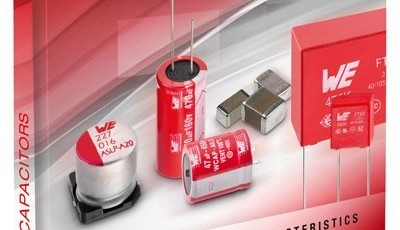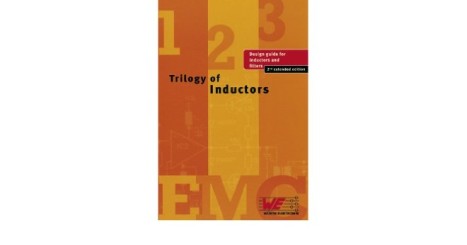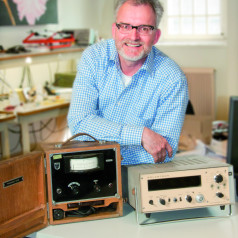Book review: ABC of Capacitors
September 13, 2017
on
on

As one of the oldest editors at Elektor I have witnessed with horror the decline of knowledge about, and precise expressivity about, passive electronics parts, in favour of just about anything that’s programmable and having more than 8 pins. However I am not frustrated at my frequently failed attempts, even in the Elektor Labs, to help designers develop fingerspitzengefühl for the Holy Trinity of Passives, R-C-L, and lure them away from compiler errors, ISP connectors and other microcontroller woes. In support of my case in favour of those “boring” passive parts, recently I got massive backing from these trends and folks:

I’m sure there are more factors contributing to the renewed interest in the capacitor, C, with capacitance C (note: italicized correctly). One of the other passives, the “black magic” inductor L with inductance L seems to have less appeal at this time but who knows, in a few years it may rise to stardom also. L was covered exhaustively in the reference book Trilogy of Inductors, a Design Guide for Inductors and Filters published by German component manufcturer Würth Elektronik. That book now has a faithful companion dealing with the capacitor, and it’s the subject of my little review.
- E-Nostalgia & Vintage. It’s trendy again to restore old high-end test gear, radios, hi-fi gear and so on, and discover that the capacitors in there are “bad”. Which is true, often, and replacement and repair yields equipment with terrific performance at a fraction of the price of a modern equivalent.
- Tantalums & Tantrums. 90 percent of all faults in consumer electronics made between 1988 and 1995 roughly is due to tantalum capacitors of the sizzling, exploding or leaking type. Replace them all, straight away. And yes that includes the SMA ones.
- Audiophools & Wannabees. Folks imagine, claim, or try to prove desperately that capacitors alone are key to an amplifier’s sound. True, sometimes, but ill-informed and wildly subjective on most occasions.
- Ignorance & Laziness. Folks no longer know or care what a picofarad (pF) is as opposed to a nanofarad) nF and consequently fail to get a simple 16-MHz microcontroller clock circuit to work. Resulting in much useless Internet traffic and even more useless patching of software to get it to work.

I’m sure there are more factors contributing to the renewed interest in the capacitor, C, with capacitance C (note: italicized correctly). One of the other passives, the “black magic” inductor L with inductance L seems to have less appeal at this time but who knows, in a few years it may rise to stardom also. L was covered exhaustively in the reference book Trilogy of Inductors, a Design Guide for Inductors and Filters published by German component manufcturer Würth Elektronik. That book now has a faithful companion dealing with the capacitor, and it’s the subject of my little review.
Read full article
Hide full article

About Jan Buiting
Jan Buiting (1958) has been active in electronics and ways of expressing it since the age of 15. Attempts at educating Jan formally have so far yielded an F-class radio amateur license, an MA degree in English, a Tek Guru award, and various certificates in ele... >>


Discussion (3 comments)